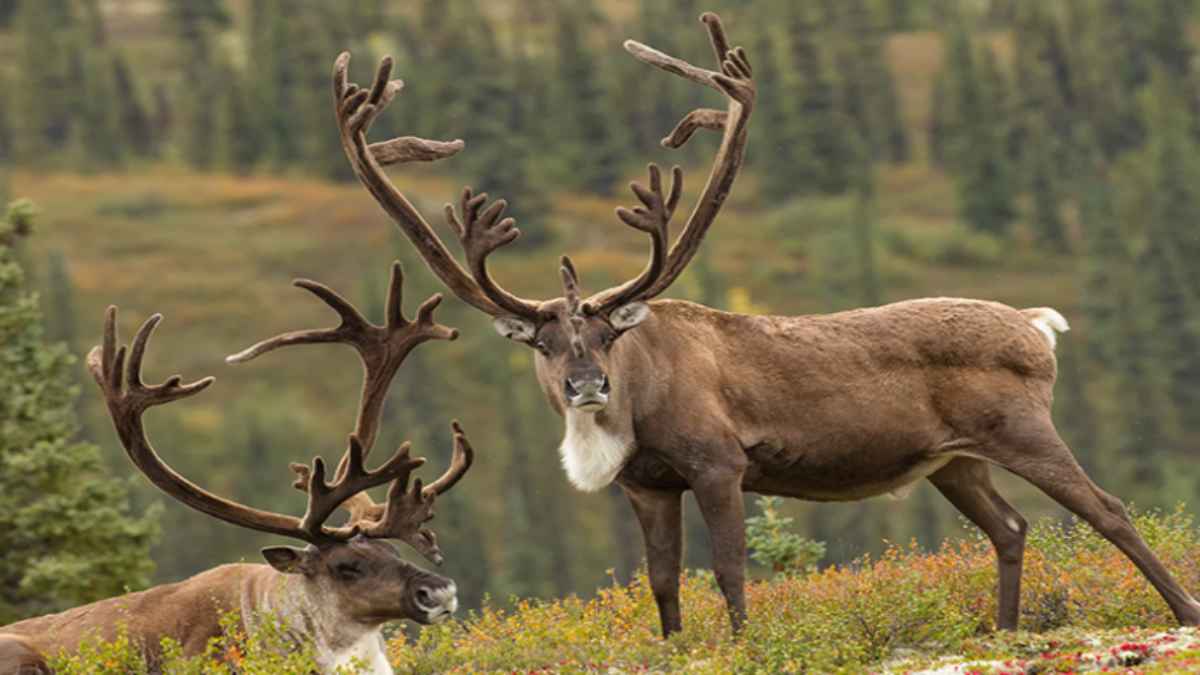Alaska, the largest state in the U.S., is renowned for its vast wilderness and diverse wildlife. From towering mountains to expansive tundras, Alaska provides a sanctuary for a myriad of wild animals. This guide delves into the iconic species that inhabit this northern frontier, offering insights into their behaviors, habitats, and the challenges they face.
Introduction
Alaska’s rugged landscapes and remote regions make it a haven for wildlife enthusiasts. The state’s varied ecosystems—from coastal shores to dense forests and icy tundras—support a rich tapestry of animal life. Understanding the wild animals in Alaska not only enhances appreciation for these creatures but also underscores the importance of conservation efforts in preserving their habitats.
Bears: The Majestic Giants
Brown Bears
Alaska is home to approximately 70% of the North American brown bear population. These formidable predators are found throughout the state, with notable concentrations in areas like Katmai National Park. Brown bears are known for their impressive size and strength, playing a crucial role in Alaska’s ecosystems.Wikipedia
Grizzly Bears
A subspecies of the brown bear, grizzly bears are distinguished by their lighter-colored fur and pronounced hump over their shoulders. They are primarily found in the interior regions of Alaska and are known for their solitary nature and territorial behaviors.
Kodiak Bears
Residing on Kodiak Island, these bears are among the largest in the world. Kodiak bears can weigh up to 1,500 pounds and are recognized for their massive size and strength. Their diet primarily consists of salmon, which they catch during spawning seasons.Vanity Fair
Moose: The Towering Herbivores
Moose, the largest members of the deer family, are commonly found throughout Alaska. Adult males, or bulls, can weigh up to 1,600 pounds and possess broad, palmate antlers. These solitary creatures are often seen near water sources, feeding on aquatic plants and shrubs. Despite their size, moose are agile swimmers and can navigate through dense forests with ease.Alaska Cruises+2The Travel+2Wikipedia+2Wikipedia
Wolves: The Elusive Predators
Alaska’s gray wolves are integral to the state’s ecosystems, often serving as apex predators. They primarily hunt in packs, preying on ungulates like caribou and moose. Wolves are known for their complex social structures and communication methods, including howling to coordinate hunts and establish territory.
Caribou: The Nomadic Herds
Caribou are known for their extensive migratory patterns, traveling up to 400 miles annually. These herds are vital to Alaska’s indigenous cultures, providing sustenance and materials for various uses. Caribou are well-adapted to Alaska’s harsh climates, with thick fur and hooves designed for traversing snow and ice.NPS.gov
Dall Sheep: Mountain Climbers
Dall sheep are native to Alaska’s mountainous regions, often inhabiting steep cliffs and rocky outcrops. Males, or rams, are recognized by their large, spiraling horns, while females, or ewes, have smaller horns. These sheep are known for their agility, capable of scaling nearly vertical rock faces to escape predators.Off the Beaten Path –+1NPS.gov+1
Bald Eagles: The Majestic Birds
Alaska boasts the densest population of bald eagles in the United States, with over 30,000 individuals residing in the state. These birds are often seen near water bodies, where they hunt for fish. Their impressive wingspans and striking white heads make them a symbol of strength and freedom.Travel AlaskaThe Travel
Marine Mammals: Ocean Dwellers
Sea Otters
Sea otters are commonly found along Alaska’s coasts, where they play a crucial role in marine ecosystems by controlling sea urchin populations. They are known for their playful behavior and use of tools, such as rocks, to crack open shellfish.
Harbor Seals
These seals are often seen hauled out on rocks or ice floes along Alaska’s coastline. They are skilled swimmers and divers, feeding on fish and invertebrates. Harbor seals are known for their large, dark eyes and spotted coats.
Humpback Whales
Humpback whales migrate to Alaska’s waters during the summer months to feed on abundant fish and krill. Their distinctive body shape and acrobatic behaviors, such as breaching and tail slapping, make them a favorite among whale watchers.
Birds of Alaska: A Diverse Avian Population
Alaska is home to over 300 bird species, ranging from migratory waterfowl to seabirds and raptors. Notable species include the horned and tufted puffins, which nest along coastal cliffs, and the red-tailed hawk, commonly found in forested areas. The state’s diverse habitats provide essential breeding and feeding grounds for these avian populations.Alaska Cruises+1The Travel+1
Conservation Efforts in Alaska
Conservation initiatives in Alaska aim to protect its unique wildlife and habitats. Efforts include establishing protected areas, such as national parks and wildlife refuges, and implementing sustainable management practices. Collaborations between governmental agencies, indigenous communities, and conservation organizations are vital in addressing challenges like habitat loss and climate change.
Conclusion
Alaska’s wild animals are integral to the state’s natural heritage and ecological balance. From the towering moose to the elusive wolves, each species plays a role in maintaining the health of their respective ecosystems. Understanding and appreciating these creatures fosters a deeper connection to Alaska’s wilderness and underscores the importance of conservation efforts.
